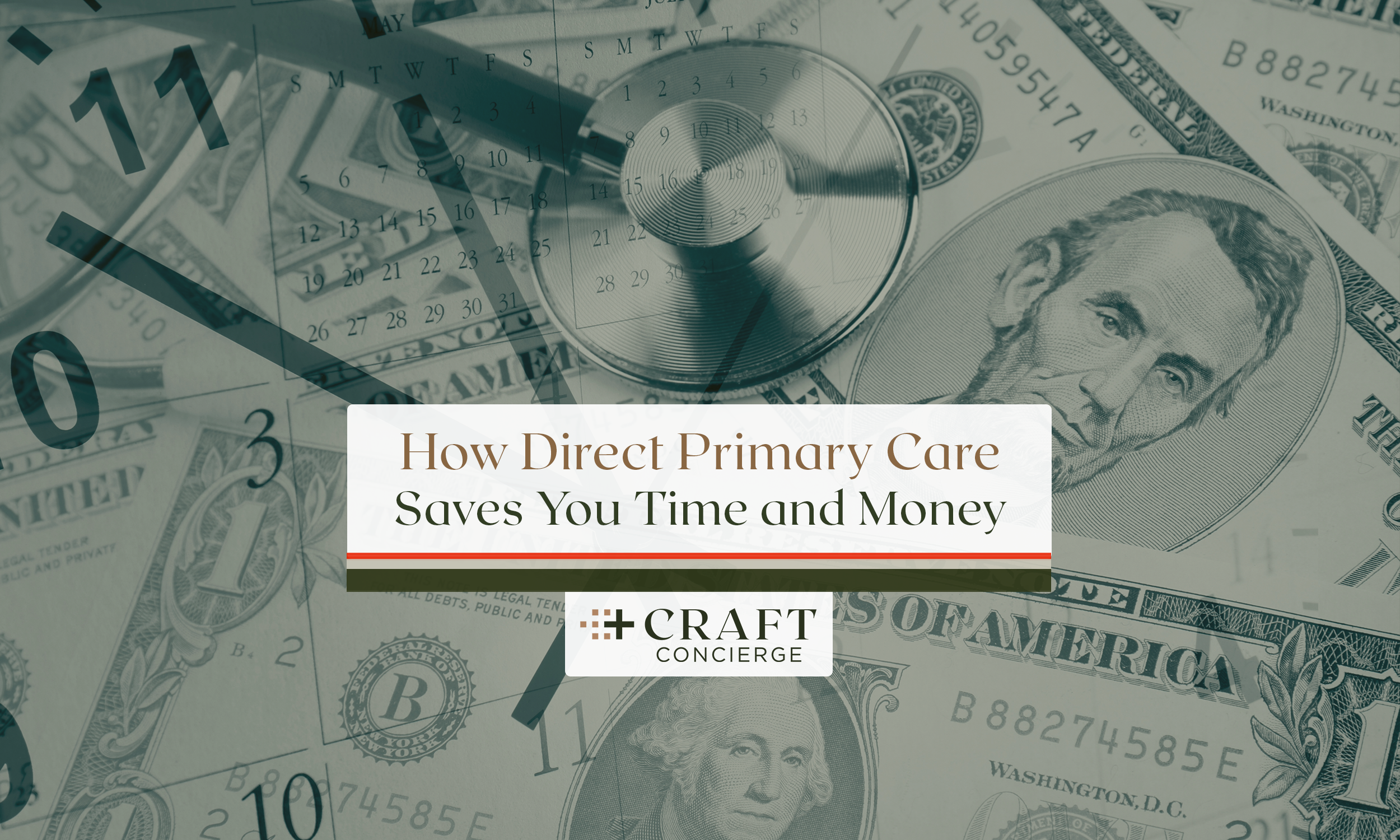If you’re tired of waiting weeks for doctor appointments, spending hours in waiting rooms, and dealing with surprise medical bills that make no sense, you’re not alone. The traditional healthcare system has become increasingly frustrating and expensive for patients, leaving many people avoiding necessary care simply because the process feels overwhelming.
Direct Primary Care (DPC) offers a refreshingly different approach that puts the doctor-patient relationship back at the center of healthcare. Instead of dealing with insurance middlemen and administrative hassles, you work directly with your physician through a simple monthly membership model that covers most of your primary care needs.
Let’s explore how this innovative healthcare model can transform your medical experience while saving you both time and money.
What Is Direct Primary Care and How Does It Work?
Direct Primary Care is a healthcare delivery model where you pay your doctor directly through a monthly membership fee, typically ranging from $50 to $150 per month depending on your age and the services included. This membership covers most primary care services including:
- Routine office visits and consultations
- Preventive care and annual physicals
- Basic lab work and diagnostic tests
- Care coordination and chronic disease management
- Direct communication with your physician via phone, text, or email
The key difference is that insurance companies aren’t involved in your day-to-day primary care. Your doctor’s focus shifts from navigating insurance requirements and maximizing patient volume to providing personalized, comprehensive care to a smaller number of patients.
This model allows physicians to spend more time with each patient and offer more accessible, responsive care. Many DPC practices limit their patient panels to 300-600 patients instead of the 2,000-3,000 patients typical in traditional practices.
Direct Primary Care Cost Savings: Real Numbers That Matter

Lower Monthly Healthcare Costs
When you examine the true cost of traditional healthcare, DPC often provides significant savings. Consider these typical scenarios:
Traditional Healthcare Costs:
- Health insurance premium: $400-800+ per month
- Deductible: $3,000-8,000 annually
- Copays: $25-50 per visit
- Prescription markups: 200-400% above wholesale
Direct Primary Care Costs:
- Monthly membership: $50-150
- No deductibles or copays for covered services
- Wholesale prescription pricing (often 80-90% savings)
- Transparent, upfront pricing for additional services
For many families, especially those with high-deductible health plans, DPC can reduce annual healthcare spending by thousands of dollars while providing better access to care.
Prescription Medication Savings
One of the most significant cost advantages of DPC comes from prescription medications. Many DPC practices offer medications at wholesale prices plus a small dispensing fee, which can result in dramatic savings:
- Generic antibiotics for $5-15 instead of $50-100
- Blood pressure medications for $10-20 instead of $80-150
- Diabetes medications at wholesale cost instead of retail markup
These savings alone can often cover your monthly DPC membership fee.
Reduced Emergency Room and Urgent Care Visits
With better access to your primary care physician, including after-hours communication and same-day appointments, you’re less likely to need expensive emergency room or urgent care visits for non-emergency conditions.
The average emergency room visit costs $1,500-3,000, while urgent care typically runs $200-500. When you can reach your DPC physician quickly for guidance or same-day appointments, many of these expensive visits become unnecessary.
Time Savings with Direct Primary Care
Same-Day and Next-Day Appointments
Traditional primary care practices often book appointments weeks or months in advance. DPC practices typically offer:
- Same-day appointments for urgent concerns
- Next-day availability for routine care
- Longer appointment times (30-60 minutes instead of 15 minutes)
- Minimal waiting room time
Direct Communication Access
Instead of playing phone tag through receptionists and nurses, DPC patients typically have direct access to their physician through:
- Text messaging for quick questions
- Email communication for non-urgent concerns
- Direct phone access during business hours
- Some practices offer after-hours physician availability
This direct access eliminates the frustration of waiting days for callbacks and allows you to address concerns before they become serious problems.
Streamlined Administrative Processes
Without insurance pre-authorizations and complex billing procedures, DPC practices can focus on care delivery rather than paperwork. This means:
- No prior authorization delays for treatments or medications
- Simplified scheduling without insurance verification
- Transparent pricing without surprise bills
- Reduced paperwork and administrative hassles
Is Direct Primary Care Worth It? Weighing the Benefits

Who Benefits Most from Direct Primary Care
DPC works particularly well for:
Individuals and families with:
- High-deductible health plans
- Chronic conditions requiring regular monitoring
- Frustration with traditional healthcare access
- Desire for more personalized medical care
Small business owners and entrepreneurs who:
- Need predictable healthcare costs for budgeting
- Want to offer unique benefits to employees
- Prefer simplified healthcare administration
People who value:
- Direct relationships with their healthcare providers
- Transparency in medical costs
- More time and attention during medical visits
Considerations and Limitations
DPC isn’t right for everyone. Consider these factors:
- You’ll still need insurance or savings for specialist care, hospitalizations, and major procedures
- Not all areas have DPC practices available
- Some people prefer the security of traditional insurance models
- Those who rarely use healthcare services might not see significant savings
Direct Primary Care vs Traditional Insurance: A Clear Comparison

Access and Convenience
- Traditional: Weeks to schedule, long waits, limited communication
- DPC: Same-day access, direct physician communication, extended visits
Cost Transparency
- Traditional: Surprise bills, complex explanations of benefits, variable costs
- DPC: Predictable monthly costs, transparent additional fees, wholesale pricing
Quality of Care
- Traditional: Rushed visits, limited physician availability, insurance-driven decisions
- DPC: Unhurried consultations, physician accessibility, medical-decision focus
Administrative Burden
- Traditional: Prior authorizations, claim disputes, network restrictions
- DPC: Simplified processes, direct relationships, minimal paperwork
Finding Quality Direct Primary Care Near You

When researching DPC practices in your area, look for:
- Board-certified physicians with good reputations
- Clear, transparent pricing structures
- Positive patient testimonials and reviews
- Modern technology for communication and scheduling
- Comprehensive service offerings that meet your needs
Many DPC practices offer consultation visits or meet-and-greet sessions where you can learn about their approach and determine if it’s a good fit for your healthcare needs.
The Future of Personalized Healthcare
Direct Primary Care represents a growing movement toward more personalized, accessible healthcare. As more physicians embrace this model and patients experience its benefits, we’re seeing innovation in how medical care can be delivered more effectively.
For those seeking a healthcare experience that prioritizes the doctor-patient relationship, offers predictable costs, and provides better access to care, DPC offers a compelling alternative to traditional healthcare models.
Taking the Next Step Toward Better Healthcare

If you’re considering Direct Primary Care, start by researching practices in your area and calculating your current healthcare costs. Many people are surprised to discover that DPC can provide better care at lower overall costs than their current arrangements.
For those interested in comprehensive healthcare solutions that combine the personalized attention of direct primary care with advanced diagnostic capabilities, services like Craft Concierge are pioneering integrated approaches to preventive care. These comprehensive programs can complement direct primary care by providing detailed health assessments and early detection services that support long-term wellness.
The combination of accessible primary care through DPC and comprehensive health monitoring through advanced screening programs represents the future of proactive healthcare – one where you have both immediate access to personalized medical care and the tools to stay ahead of potential health issues.
Consider exploring Direct Primary Care as a way to reclaim control over your healthcare experience. With better access to your physician, transparent costs, and more personalized attention, you might discover that quality healthcare doesn’t have to be complicated or prohibitively expensive.
Your health deserves an approach that puts your needs first, respects your time, and provides the care you need when you need it. Craft Concierge offers exactly that – a return to the fundamental relationship between doctor and patient, supported by modern convenience and transparent pricing.





